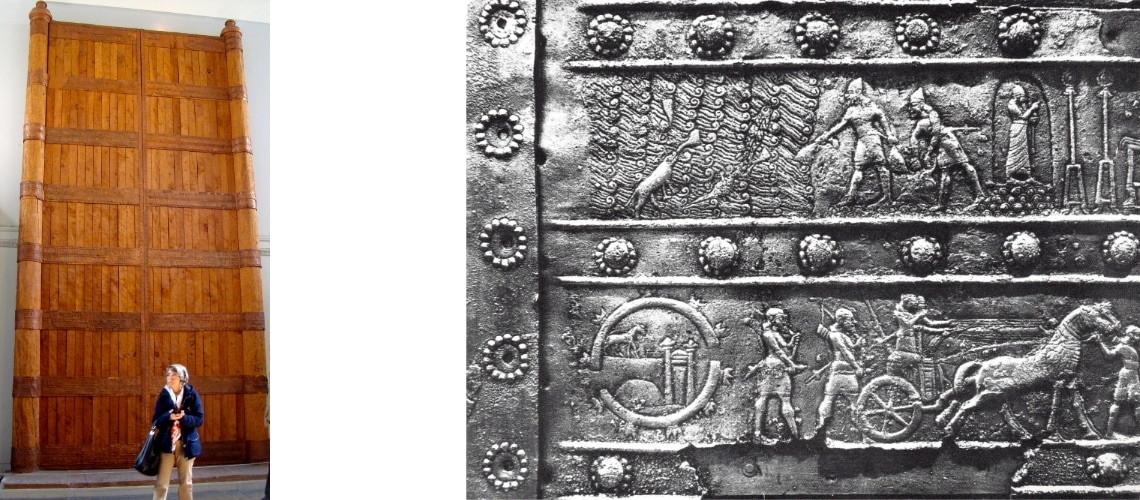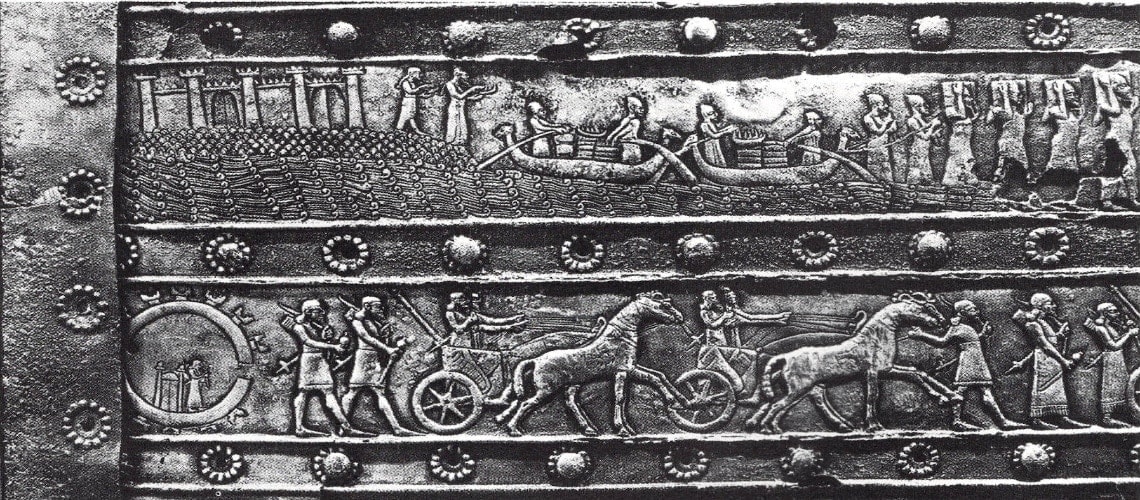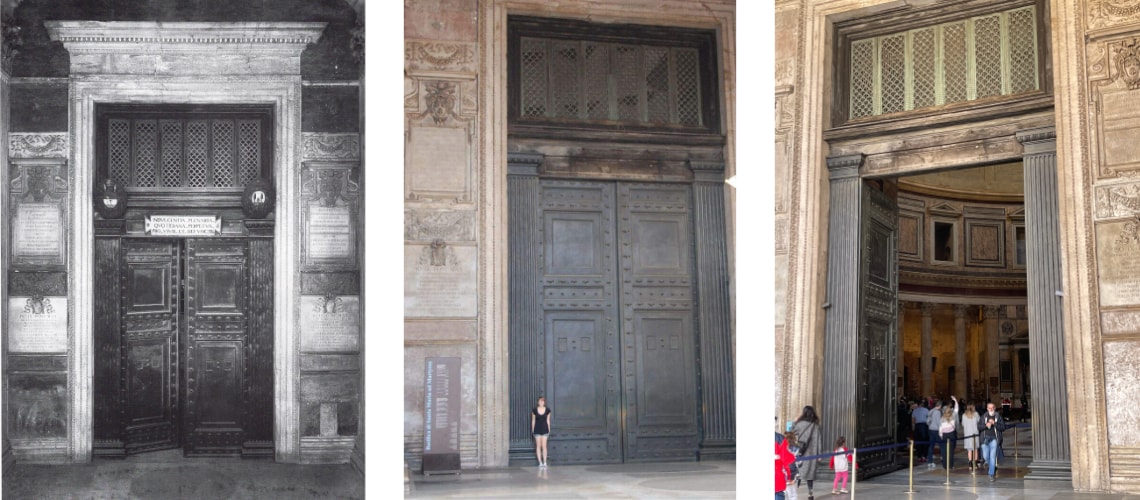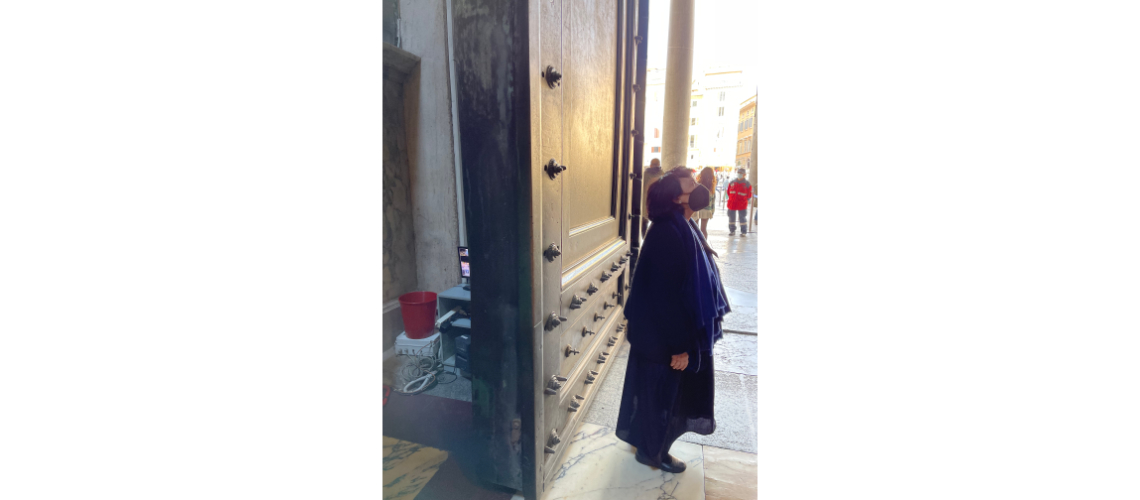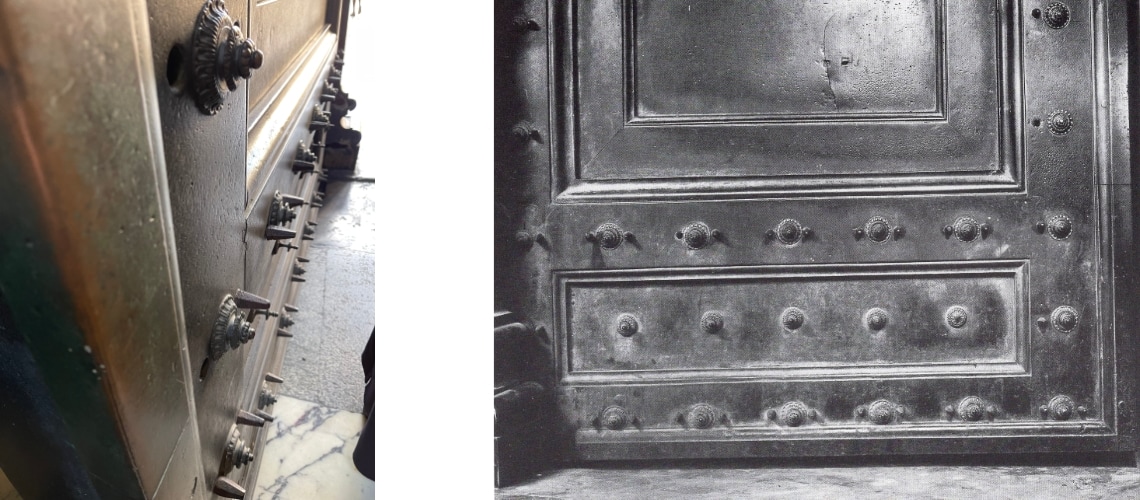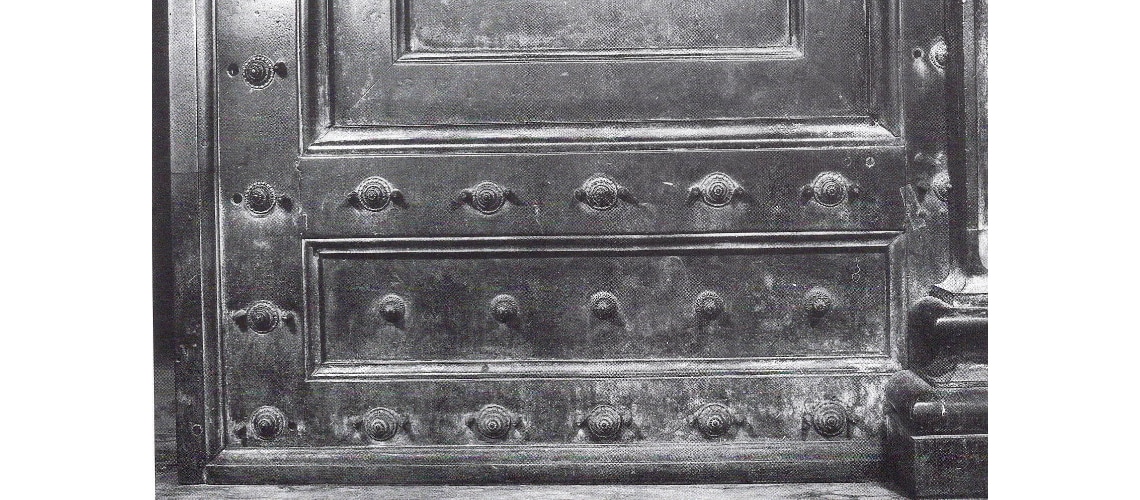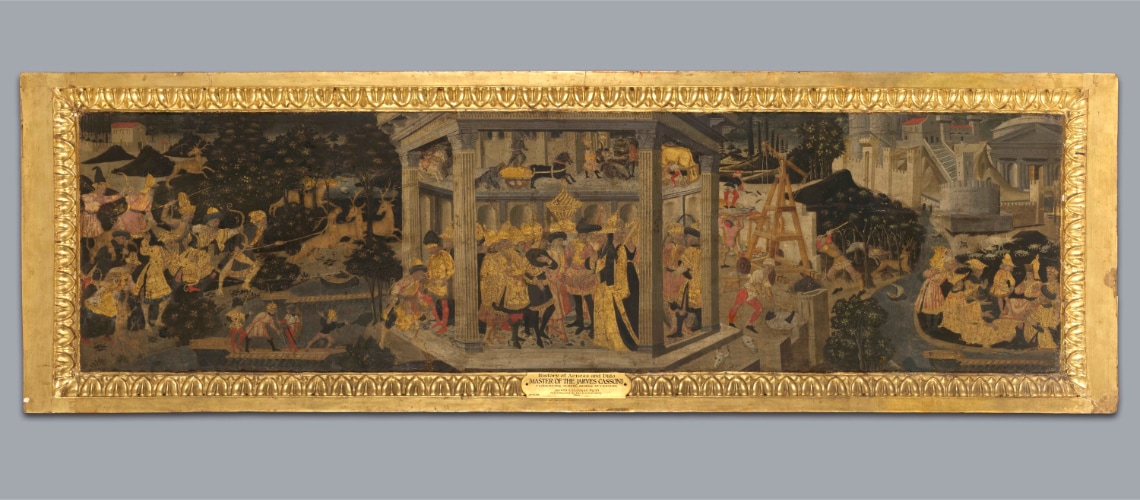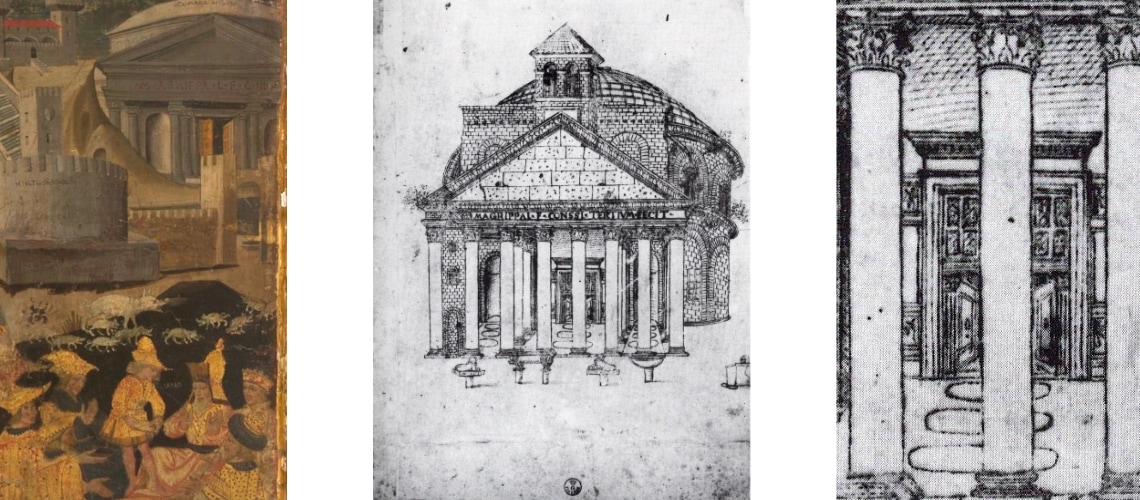The Ancient Bronze Doors in Italy
Part I
Metal doors, or rather “lined” metal doors, have been known since ancient times; Homer in the Odyssey describes those of the palace of Alcinous:
“The palace of Alcinous gave off a great light as if it were a sun or a moon. From the threshold, along all the walls, the wall was lined with bronze with, at the top, enameled friezes of a blue color. The doors were of gold and the threshold had silver jambs, the architrave was of silver and the handles of gold”.
In the tomb of Rekmire in Thebes (ca. 1400 BC) a workshop of bronze workers casting molten bronze to make the door of the temple of Amun is depicted, and the doors of Babylon, the door of the temple of Zeus in Olympia, and the bronze door of the Arsenal of Piraeus were also made of bronze.
The Assyrians in about 850 BC had decorated the wooden door of the palace of King Salmanassar III in Imgur-Enlil by covering it with sculpted bronze bands fixed with nails to the wood (Photos 1,2,3)
| 1 | 2 |
3
The doors of public buildings in the Roman era were mainly made of bronze (Vitruvius defines the typology (De architectura, lib. IV, chap. IV). Among those that have remained in Rome, the most famous are the door of the Pantheon from the 2nd century AD, that of the Temple of Romulus in the Roman Forum, the door of the Curia Iulia from the age of Domitian that Borromini used for St. John Lateran and which was enlarged and decorated with new studs and shoots.
In the late ancient era, there are, all reused, the door of Pope Ilarus (460 AD) in the oratory of St. John the Baptist in the Lateran Baptistery, that of St. John the Evangelist in the same Baptistery, that in the cloister of St. John Lateran and that in the chapel of the Scala Santa.
The door of the Pantheon, from about 120 AD, is the largest, 7.53 meters high and about 4.45 wide; it is a door of wood covered with 4 cm thick bronze sheets, probably cast in an open horizontal shape that allowed the casting of large and thick sheets (Photos 4,5,6,7,8,9).
| 4 | 5 | 6 |
| 7 | 8 |
9
In 1520, Pope Leo X promoted the restoration of the Pantheon and its door, in 1555 Pope Pius IV “had the metal door cleaned for rusty old age” and 182 bronze studs replaced; Pompeo Ugonio, Canon of the Vatican Basilica, at the beginning of the 17th century tells us that these doors were “gilded with similar gates above”; fortunately, in the stripping carried out by Pope Urban VIII in 1625 of the gilded bronze coverings of the pronaos beams to melt down 80 cannons for Castel Sant’Angelo and the twisted columns for the altar of St. Peter, the door was not recast (Photos 10,11,12)
| 10 | 11 |
12
The door of the Pantheon has been depicted in paintings since the mid-1400s, as in the chest of Apollonio di Giovanni with the stories of Dido and Aeneas in the Art Gallery of Yale University dated around 1450, where the two doors are depicted, with three mirrors and in yellow, probably gilded, but which fill the entire space of the opening without the upper grille. Around 1500 Simone del Pollaiolo designed it with a single door, but with the upper grille; finally Raphael designed it in 1508 as it is still today, except for the studs and decorations. (Photos 13,14,15,16,17)
13
| 14 | 15 | 16 |

